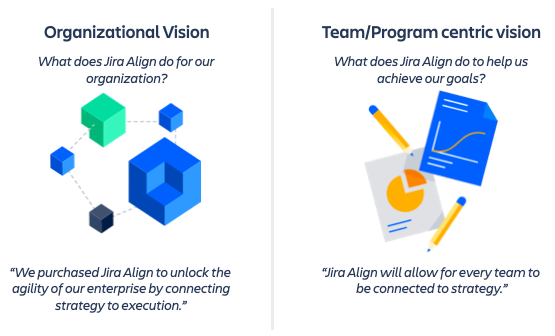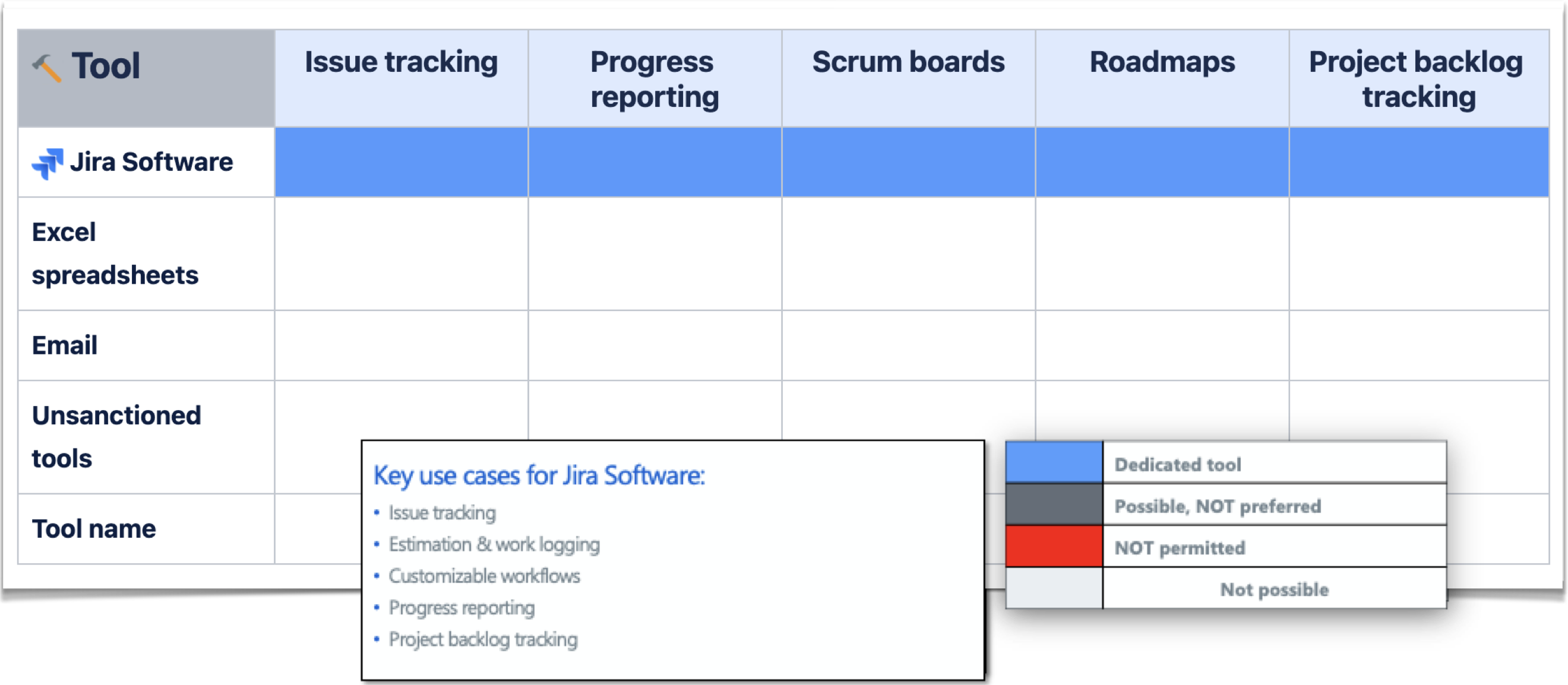Defining a vision and creating a value proposition
Overview
Working with your team to define a vision for your Atlassian solution rollout is the first step to driving effective adoption. Your organization likely purchased the software to streamline workflows. Still, you may find that when engaging with your teams and programs during and after your deployment, there are other uses and benefits.
Key messages
Work with your core team to identify the key messages and themes to use in your communications to end-users, teams, and programs. These should include the major benefits (for the organization, the teams, and programs), usage guidelines, and important calls to action.

Jira Align example
Developing your Atlassian solution rollout value proposition
Be sure to answer the following questions:
- What are we trying to achieve with the Atlassian toolset?
- Why are we doing this?
- What is the cost of not changing?
- What are the benefits of adopting the Atlassian toolset?
- Who will be impacted and how?
Tool matrix
An important step in solidifying your organizational vision for the Atlassian solution rollout is the tool matrix. This document should outline how the software should (and should not be) used, along with your other software tools and systems. This matrix should serve as the basis for creating usage guidelines and policies for users, teams, and programs, as well as clarify the goals of the overall deployment.

Jira Software example

Jira Align example
Developing sponsorship
It is common to have worked on a project where progress has stalled.
- Decisions are made, reversed, and work cycles are lost.
- Executive sponsors change, stalling both initiatives and IT application deployments.
- The resources necessary to move forward are not made available.
- Timelines slip, and the people involved become confused or alienated.
All of these issues are symptoms of a missing or inadequate executive sponsorship. The effectiveness of the executive sponsor is the single most important predictor of project success.
Selecting your sponsor
The ideal Atlassian solution executive sponsor will meet the necessary criteria.
- The bandwidth and the desire to be an active and visible sponsor
- The ability to influence other business leaders and obtain their support
- The authority to approve and assign resources
- Some degree of direct control over the affected groups and relevant systems
If you are having trouble engaging an executive sponsor, some additional considerations may help identify the right individual:
- Who decided to implement the specific Atlassian solution at your organization? Who signed the check?
- Who on your team can make a final decision when issues are escalated?
- Who can remove roadblocks to launching the specific Atlassian solution for the intended users, teams, and programs?
Responsibilities
The ideal Atlassian executive sponsor will be able to perform several supporting actions.
Coalition building
- Model the changes they will be asking others to make.
- Establish clear expectations of management.
- Listen to feedback from all levels and manage the expected resistance to change.
Communications (more than email!)
- Help develop a vision for the specific Atlassian solution.
- Facilitate and participate in delivering the message about the specific Atlassian solution using the desired communication channels best suited for your organization.
Decision making
- Oversee and approve the scope, use cases, and project objectives.
- Support project decisions and help achieve team alignment when the direction is unclear.
- Ensure adequate resources are dedicated to the deployment and rollout of the project.
Was this content helpful?
Connect, share, or get additional help
Atlassian Community